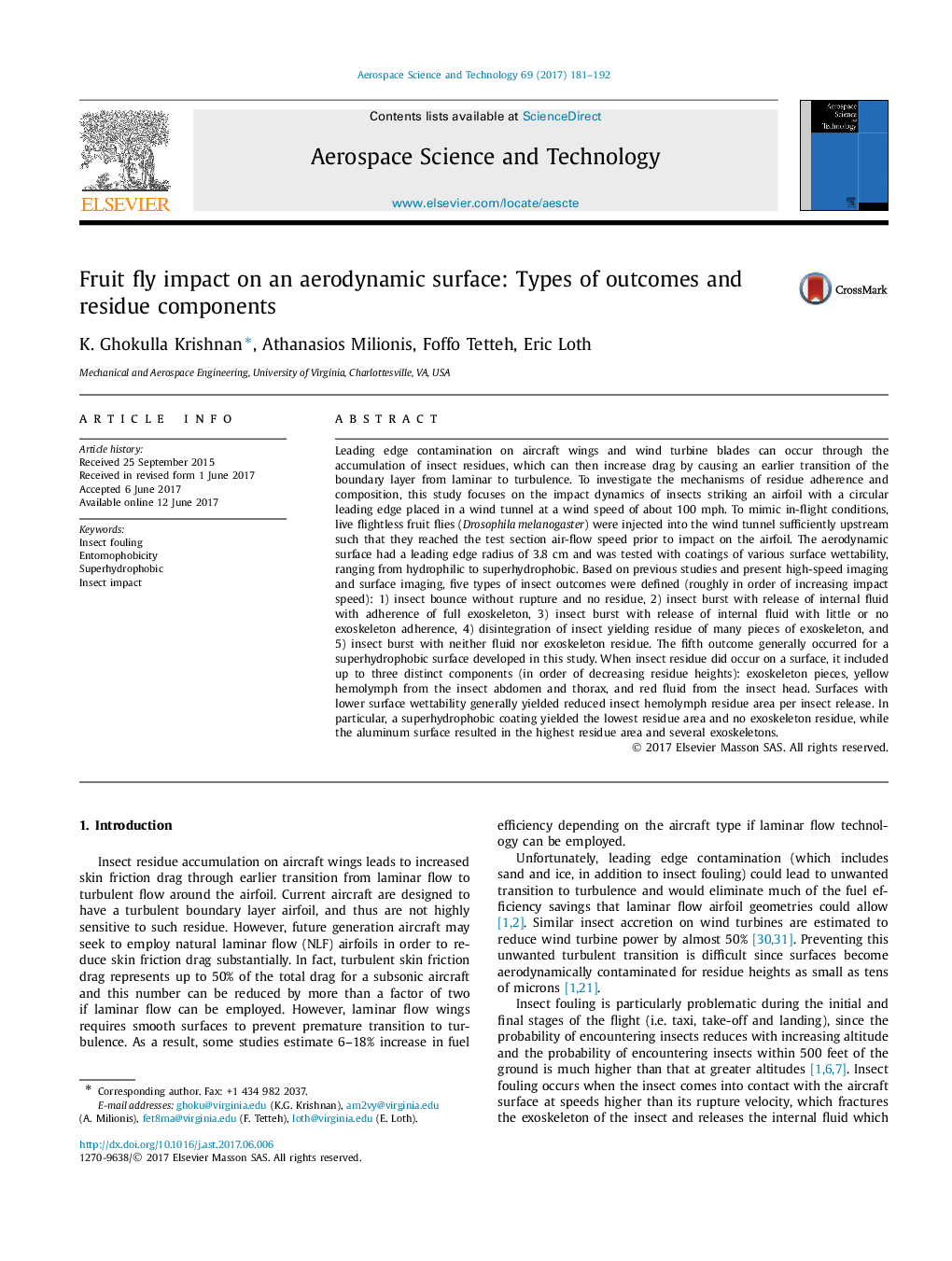| Article ID | Journal | Published Year | Pages | File Type |
|---|---|---|---|---|
| 5472728 | Aerospace Science and Technology | 2017 | 12 Pages |
Abstract
Leading edge contamination on aircraft wings and wind turbine blades can occur through the accumulation of insect residues, which can then increase drag by causing an earlier transition of the boundary layer from laminar to turbulence. To investigate the mechanisms of residue adherence and composition, this study focuses on the impact dynamics of insects striking an airfoil with a circular leading edge placed in a wind tunnel at a wind speed of about 100 mph. To mimic in-flight conditions, live flightless fruit flies (Drosophila melanogaster) were injected into the wind tunnel sufficiently upstream such that they reached the test section air-flow speed prior to impact on the airfoil. The aerodynamic surface had a leading edge radius of 3.8 cm and was tested with coatings of various surface wettability, ranging from hydrophilic to superhydrophobic. Based on previous studies and present high-speed imaging and surface imaging, five types of insect outcomes were defined (roughly in order of increasing impact speed): 1) insect bounce without rupture and no residue, 2) insect burst with release of internal fluid with adherence of full exoskeleton, 3) insect burst with release of internal fluid with little or no exoskeleton adherence, 4) disintegration of insect yielding residue of many pieces of exoskeleton, and 5) insect burst with neither fluid nor exoskeleton residue. The fifth outcome generally occurred for a superhydrophobic surface developed in this study. When insect residue did occur on a surface, it included up to three distinct components (in order of decreasing residue heights): exoskeleton pieces, yellow hemolymph from the insect abdomen and thorax, and red fluid from the insect head. Surfaces with lower surface wettability generally yielded reduced insect hemolymph residue area per insect release. In particular, a superhydrophobic coating yielded the lowest residue area and no exoskeleton residue, while the aluminum surface resulted in the highest residue area and several exoskeletons.
Keywords
Related Topics
Physical Sciences and Engineering
Engineering
Aerospace Engineering
Authors
K. Ghokulla Krishnan, Athanasios Milionis, Foffo Tetteh, Eric Loth,
